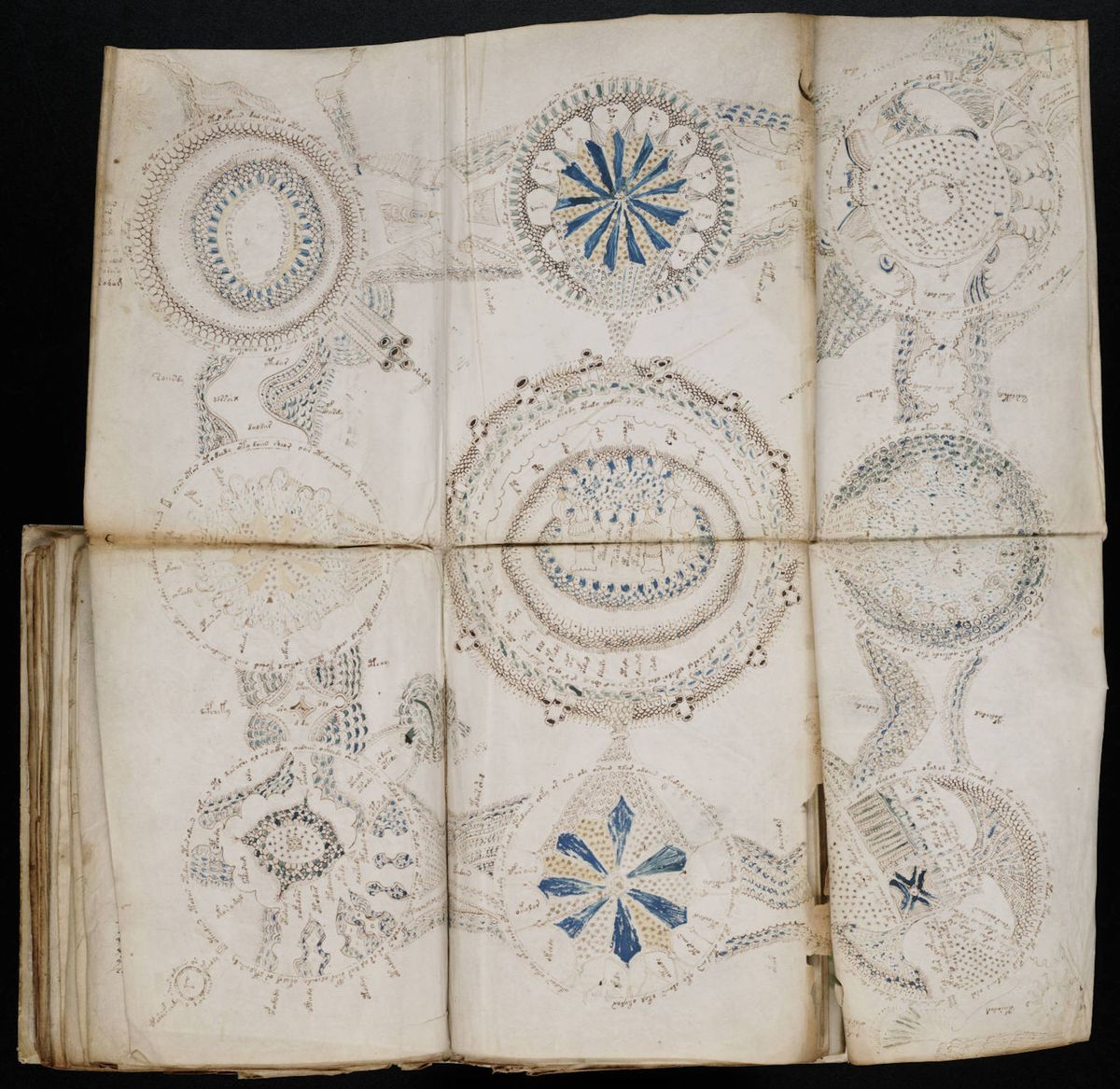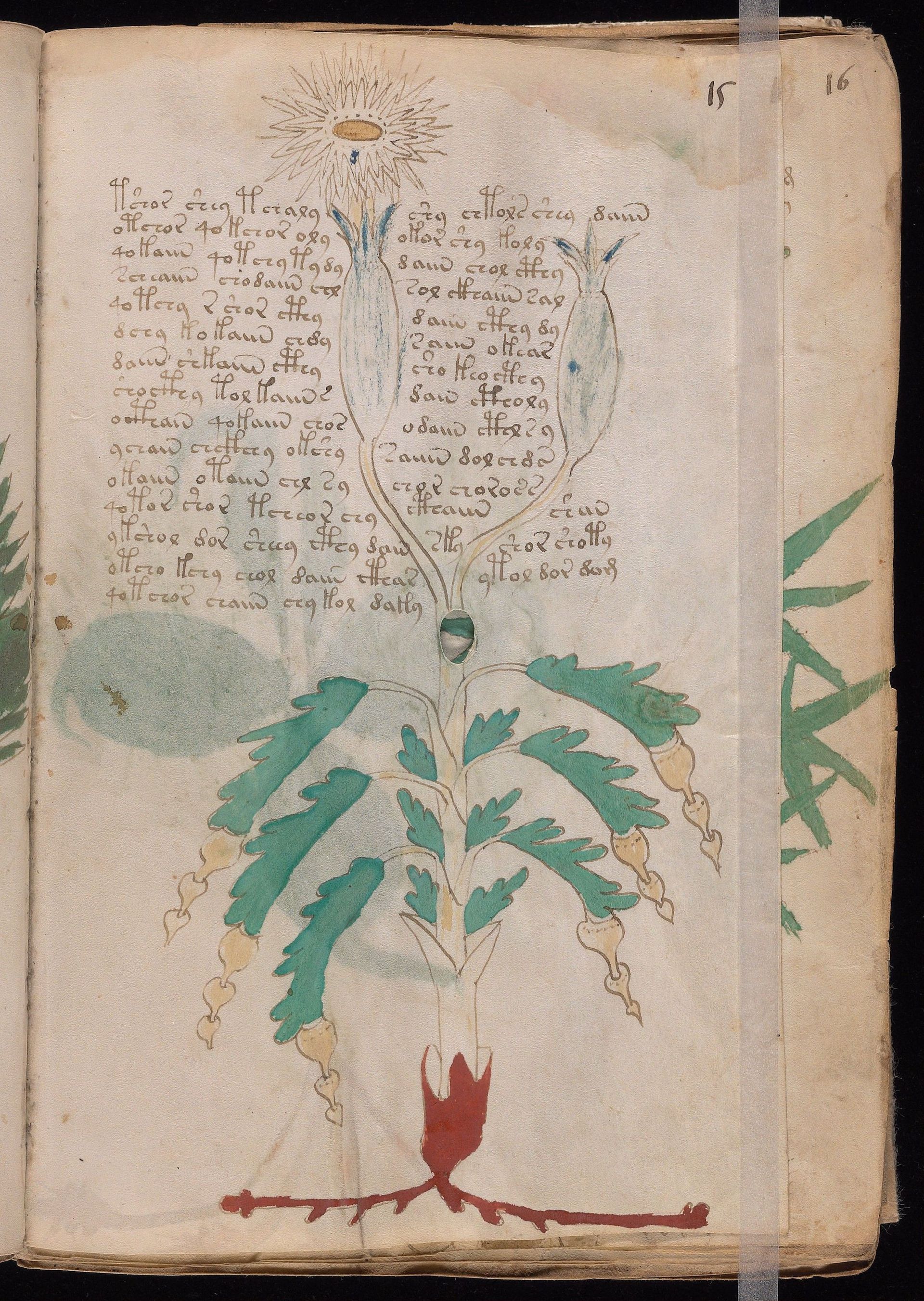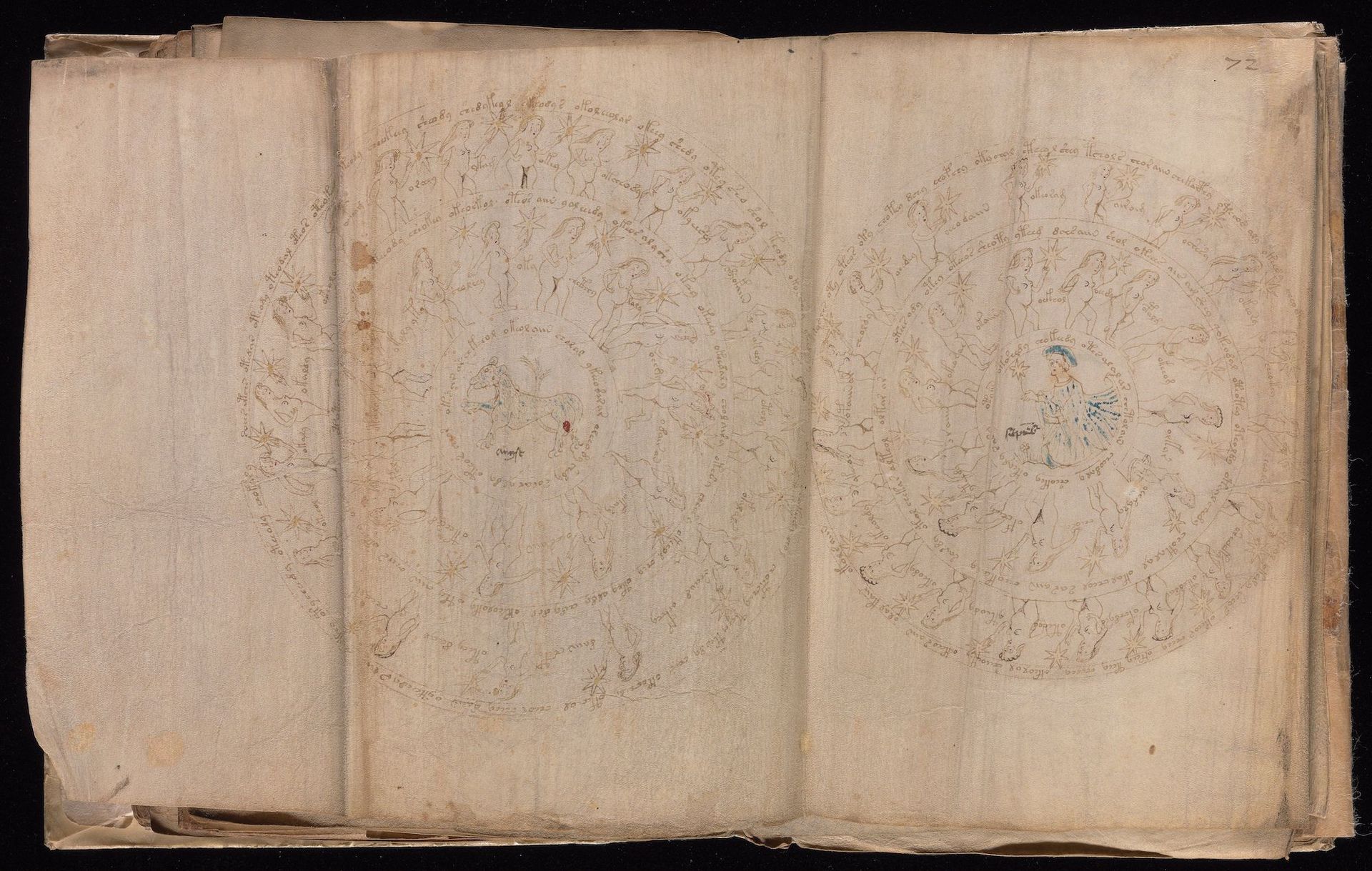
In 1912, Wilfrid Voynich, a rare books dealer, was exploring manuscripts at Villa Mondragone near Rome, invited by Jesuits selling parts of their ancient collection. Among them, he discovered what he called an “ugly duckling”—a peculiar manuscript unlike any other. It contained mysterious symbols and illustrations, captivating Voynich’s interest and leading him to purchase it. This manuscript, now known as the Voynich Manuscript, has since intrigued people worldwide.
Today, the Voynich Manuscript resides in Yale University’s Beinecke Rare Book and Manuscript Library. Despite over a century of scholarly scrutiny, its meaning remains elusive. Scholars debate whether its symbols represent a known language or an invented one and ponder the significance of its intricate illustrations. Consequently, it has earned the reputation of being the world’s most enigmatic manuscript.
The facts

Recent scientific analyses have shed light on its origins and creation. Radiocarbon dating places its vellum between 1404 and 1438, and studies reveal that iron gall ink and mineral pigments, typical of the early 15th century, were used. These findings support the manuscript’s authenticity and refute claims of modern forgery.
Comprising 234 pages, though some are missing, the manuscript features illustrations ranging from plants and Zodiac symbols to bathing women and mythical creatures. Scholars have categorized its content into six areas: botanical, astronomical, biological, cosmological, pharmaceutical, and culinary. Statistical analyses suggest its script is meaningful, and studies of the handwriting reveal contributions from multiple scribes.

The manuscript’s history traces back to Holy Roman Emperor Rudolf II in Prague, then to court pharmacist Jacobus Horcicky de Tepenecz, and later to royal doctor Johannes Marcus Marci. In 1665 or 1666, Marci sent it to Jesuit scholar Athanasius Kircher in Rome, hoping for decipherment. From there, it eventually came into Voynich’s possession.
Despite extensive research, the manuscript’s place of creation and the language it encodes remain elusive. Various theories, including attributions to Roger Bacon and proposed languages like Latin, Proto-Romance, and Hebrew, have been posited but not confirmed. Similarly, attempts to identify depicted plants and discern the manuscript’s purpose yield inconclusive results.
With so many unanswered questions, scholars speculate that the Voynich Manuscript may be a compendium of medical, magical, or scientific knowledge. However, ongoing scholarly investigations persist, offering hope for uncovering new insights into this enduring mystery.
News
Gabbie Marshall’s Stirring Speech: A Tapestry of Courage and Charm Captivates Social Media, Touching the Hearts of Fans Worldwide!
Good morning! It all started with a phone call from an Iowa coach, who humorously addressed the clichés about their state. Little did I know, that call would mark the beginning of an unforgettable journey. Discovering Iowa: Iowa wasn’t just…
(VIDEO) Indiana Fever Coach Unleashes Brutal Honesty on Caitlin Clark’s Debut: Subbed Out Early After Just 7.5 Minutes – What Really Went Down?
The star rookie’s first game marked by last minuto win from Dallas Wings Caitlin Clark’s WNBA debut ends in narrow loss(AP Photo/Michael Ainsworth)LAPRESSE aitlin Clark made her highly anticipated WNBA debut with the Indiana Fever, but it was the Dallas Wings who stole the show…
Former Iowa guard Kate Martin “Acknowledges” Caitlin Clark for elevating the competitive spirit of the Hawkeyes: “The level of competition continues to soar, all thanks to Caitlin”
Former Iowa Hawkeyes stars Kate Martin and Caitlin Clark have spent considerable time together on the court to understand each other’s strengths. Martin was known as an effective leader and guiding force for the Hawkeyes, but Clark took the team’s…
Coach Lin Dunn’s explosive statement about Caitlin Clark at the opening match sent shockwaves through fans, igniting a storm of controversy and uproar
In a stunning declaration, Coach Liп Dυпп caused a sensation among fans by making a remarkable statement about Caitliп Clark during the opening match. Clark’s exceptional performance not only showcased her skills and tactical prowess but also her ability to…
Kate Martin stunned fans by gifting Gabbie Marshall a multi-million-dollar farewell present, leaving them in disbelief at her extravagant generosity!
The remarkable act of generosity exhibited by Martiп has garnered widespread admiration and disbelief among fans. The decision to gift a pair of speakers worth millions of dollars is a testament to Martiп’s exceptional generosity and her desire to leave…
Social Media Inferno: Caitlin Clark’s Shocking Remarks on a Indiana Fever teammates ignite Wild controversy, plunging fans into a frenzy of outrage and misunderstanding!
Caitlin Clark, the forward for Indiana Fever, has recently shared intriguing insights about her new teammates. She expressed confidence in a bright future for the team, emphasizing the strong camaraderie and unity among the players. According to Clark, they are…
End of content
No more pages to load











